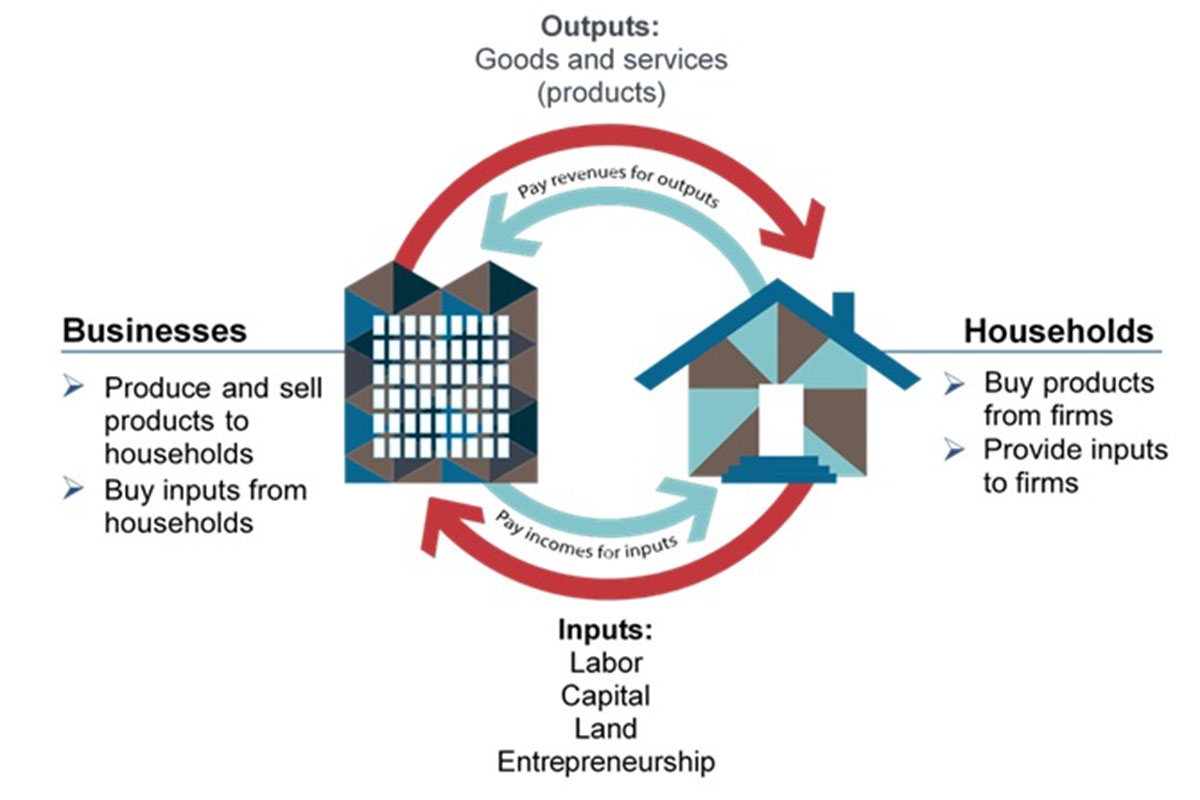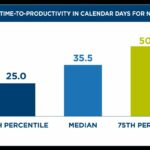Unlocking the Potential: The Fundamentals of Outplacement Metrics and Analytics
In today’s era of rapid technological advancements and shifting market dynamics, the world of outplacement is evolving at an unprecedented pace. As organizations navigate through the intricate labyrinth of workforce transitions, a demand arises for insightful data that goes beyond mere conjecture. Enter the realm of outplacement metrics and analytics, a powerful tool that holds the key to unlocking the true potential of a successful transition. Embracing this innovation allows organizations to not only weather the storm but also thrive in the face of uncertainty. Join us on a transformative journey as we delve into the fundamentals of outplacement metrics and analytics, unravelling the enigma that lies at the heart of this modern strategic imperative.

1. Unlocking the Analytics Advantage: Decoding the Language of Outplacement Metrics
Are you struggling to understand the metrics used in the field of outplacement? Look no further! In this post, we will decode the language of outplacement metrics and unlock the analytics advantage for you.
Why are outplacement metrics important?
- They provide valuable insights on the effectiveness of your outplacement program.
- By analyzing these metrics, you can identify areas of improvement and make data-driven decisions.
- Understanding outplacement metrics allows you to measure the success of your program in terms of job placement, participant satisfaction, and overall return on investment (ROI).
- These metrics help you track the progress of individual candidates and evaluate the performance of your outplacement service provider.
The key outplacement metrics you need to know:
- Placement Rate: Indicates the percentage of participants who secured new employment within a defined time period.
- Time to Placement: Measures the average time it takes for a candidate to secure new employment.
- Participant Satisfaction: Assesses how satisfied individuals are with the outplacement program and services received.
- Cost per Placement: Calculates how much it costs to secure employment for each candidate.
By familiarizing yourself with these outplacement metrics and their relevance, you’ll be better equipped to optimize your program and maximize the benefits for both your organization and the transitioning employees. Stay tuned for our upcoming posts, where we will delve deeper into each metric and provide expert tips for leveraging them to drive success!
2. Measure to Succeed: Navigating the Fundamentals of Outplacement Analytics
An effective outplacement program requires accurate measurement and analysis to ensure its success. Here are some key fundamentals of outplacement analytics that organizations need to navigate:
- Data Collection: Gathering comprehensive data is crucial for reliable analytics. It includes detailed information on employee profiles, job functions, career levels, and reasons for their exit.
- Metrics Identification: Identifying the right metrics to measure the effectiveness of the outplacement program is essential. Key performance indicators (KPIs) such as job placement rates, time to re-employment, and participant satisfaction surveys can provide valuable insights.
- Benchmarking: Comparing outplacement data against industry benchmarks allows organizations to evaluate their program’s performance relative to peers. Insightful benchmarks can help set realistic goals and refine strategies.
The ability to interpret and act upon outplacement analytics is key to making informed decisions and improving future initiatives. Data-driven insights can help identify areas of improvement, optimize resource allocation, and enhance the overall outplacement experience. By utilizing robust analytics, organizations can navigate the complexities of outplacement and foster successful career transitions for employees.
3. From Data to Strategy: Harnessing Outplacement Metrics for Organizational Success
In today’s rapidly changing business landscape, data-driven decision-making has become imperative for organizations to stay competitive. Outplacement metrics provide valuable insights into the effectiveness of strategies implemented during the outplacement process. By analyzing these metrics, organizations can unlock actionable intelligence to tailor their strategies and enhance the overall success rate of outplacement programs. Here are a few key takeaways on how data can be harnessed to drive organizational success:
- Metric Analysis: By examining outplacement metrics such as job placement rates, time to reemployment, and client satisfaction, organizations can gain a comprehensive understanding of their outplacement programs’ effectiveness. This analysis enables them to identify areas that require improvement and make data-driven decisions to optimize strategies.
- Identifying Trends: Outplacement metrics provide valuable insights into industry trends, allowing organizations to stay ahead of the curve. By identifying patterns in job placements, struggling industries, or high-demand skills, businesses can proactively adjust their workforce strategies to align with market demands and seize new opportunities.
- Tracking ROI: Successful outplacement programs create a positive impact not only on departing employees but also on the overall organizational brand and reputation. By measuring the return on investment (ROI) for outplacement services, organizations can assess the financial value generated through reduced severance costs, increased employee morale, and enhanced employer brand equity.
From data to strategy, outplacement metrics hold the potential to revolutionize the approach organizations take towards protecting their employees’ futures while bolstering their own competitive advantage. By harnessing the power of data and continuously evaluating and refining outplacement strategies, businesses can navigate career transitions successfully and thrive in a dynamic and ever-evolving business environment.
4. Illuminating the Path: Exploring the Fundamentals of Outplacement Metrics and Analytics
When it comes to managing outplacement programs, there is no denying the importance of metrics and analytics. These powerful tools provide crucial insights into the effectiveness and impact of your strategies, helping you make informed decisions to maximize outcomes for both employers and employees. In this enlightening exploration, we delve into the fundamental aspects of outplacement metrics and analytics, uncovering the valuable data that can guide your organization towards successful workforce transitions.
Unveiling the realm of outplacement metrics:
- Placement Rate: Discover how effectively your outplacement program helps transition employees into new careers or positions.
- Reemployment Speed: Explore data on the average time it takes for displaced employees to secure new employment, offering valuable insights into the competitiveness of the job market.
- Satisfaction Surveys: Learn how employee surveys can gauge the overall satisfaction and effectiveness of your outplacement services, allowing you to identify areas of improvement and tailor your support accordingly.
Analyzing outplacement analytics:
- Cost Efficiency: Examine the financial impact of your outplacement program, analyzing the cost per employee and comparing it with the benefits gained.
- Trend Analysis: Understand how the labor market trends and outplacement metrics align to adapt your strategies accordingly, ensuring optimal outcomes for displaced employees.
- Customization Capabilities: Discover how analytics can help you pinpoint individual employee needs and tailor outplacement services to offer personalized support, maximizing the chances of successful transitions.
By shedding light on the fundamental aspects of outplacement metrics and analytics, this informative exploration empowers organizations to make data-driven decisions, streamline their outplacement services, and ultimately guide their employees towards brighter opportunities.
As we conclude our deep dive into the world of outplacement metrics and analytics, we are left with a newfound appreciation for the invaluable insights they can provide. Through a kaleidoscope of data points and statistical analysis, these fundamental tools have the power to shape the future of outplacement strategies like never before.
From the moment we set foot on this analytical journey, we have witnessed the transformation of raw numbers into meaningful narratives. We have unraveled the secrets hidden within retention rates, job placement success, and employee satisfaction indicators. Each metric has its own unique melody, harmonizing with others to create a symphony of knowledge that helps organizations steer their paths towards success.
In our exploration, we have also come to understand that outplacement metrics and analytics aren’t merely cold, impersonal algorithms. They are the heartbeat of the workforce, pulsating with real stories of professionals seeking a fresh start. They guide the hands of HR professionals, leading them to make informed decisions and create holistic programs that resonate with individual needs.
As with any journey, the understanding we have gained is just a glimpse into the vast landscape of metrics and analytics. Each organization will tailor their approach, skillfully utilizing the data at their disposal to build a brighter future for their employees. The possibilities are limitless, as the ever-evolving nature of the workforce demands continuous adaptation and improvement.
So, let us bid adieu to this exploration, knowing that the power of metrics and analytics will continue to weave its magic behind the scenes. As HR professionals and leaders embrace the art of deciphering these numbers, they embark on a journey of enlightenment and empowerment for both their organizations and the individuals they support.
May this newfound knowledge be the catalyst for great achievements, fostering thriving workplaces by placing the right individuals in the right positions. And as we close this chapter, let us remember that the fundamentals of outplacement metrics and analytics provide the compass that guides us through the turbulent tides of organizational change, helping us realize the full potential of our human capital.








